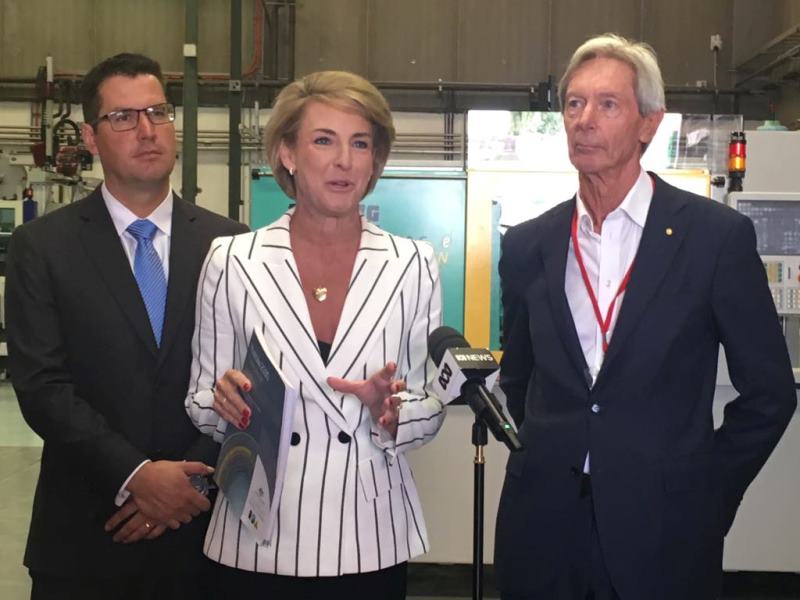The chair of Innovation and Science Australia (ISA) Bill Ferris spoke at the National Press Club in Canberra today, following the release of its 2030 Strategic Plan yesterday.
The plan contains 30 recommendations to the federal government that aim to make Australia one of the world’s top tier innovative nations by 2030.
“Our report is a report to government; but its recommendations address all sectors of the economy and all of our citizenry,” Ferris said.

“Ultimately it is about what sort of country we want by 2030 and beyond.”
He said that sustainable job growth and future prosperity are at stake if Australia doesn’t significantly increase its current investment in innovation.
He warned that at present, “Australian business simply isn’t investing in innovation at the rate seen in the business communities of our competitor nations.”
“Innovation should be celebrated and encouraged in Australia, not feared or tip-toed around like some elephant in the room,” he added.
Mr Ferris said investment levels in innovation in Australia have been falling since the GFC, with the government investing one per cent on Business Expenditure on Research and Development (BERD) in 2015-16.
This compares with 3.6 per cent in Israel over the same period, and around 2 per cent in Germany and the United States.
ISA recommends that Australia invests 1.7 per cent of its GDP on BERD by 2030.
To close the “considerable gap in innovation performance” between Australia and its rivals on the global stage, the ‘Prosperity through Innovation’ report sets out five imperatives spanning education, training, research, development and regulation.
The venture capitalist and inaugural chair of ISA used his address to highlight what he described as the most important of the report’s 30 recommendations and to put the issue of innovation on the national agenda.
Securing long-term prosperity in Australia would require stimulating high-growth firms, encouraging start-ups and improving productivity across the board, said Mr Ferris.
“This includes improved design of existing research and development incentives (tax based, grants based and co-investments) and incentives to drive a greater bang for the government’s buck, and to make sure they are readily accessible to growth-oriented companies, big and small.”
“The Board notes that Australia’s reliance on indirect tax-based incentives is out of step with other more innovative nations.”
Mr Ferris noted that Australia has only 13 per cent of its business incentives in direct measures. Meanwhile Sweden, Germany and Israel stand at 100 per cent, while in the United States it is 73 per cent, and 50 per cent in the UK.
He said that a key area where direct support should be boosted is in facilitating exports from Australian firms.
“Exports are a strong proxy for innovative and competitive performance and our plan therefore calls for an expansion of Austrade’s EMDG program.”
He pointed to the fact that there will be a doubling of consumer households in Asia between now and 2030, when the number will reach 1.2 billion, calling it “a large multiplier opportunity”.
His focus on international considerations and domestic competitiveness continued when he touched on Australia’s immigration policy, saying, “As a small part of the global community, Australia can’t expect to find all of this talent within our own shores.”
“It is therefore vital we have an immigration policy that can attract and retain world class talent for our innovation system. Reducing immigration of such talent will not lead to more jobs for Australians – if anything it will do the opposite: highly skilled migrants are ‘job multipliers’ – developing skills and creating new jobs that we simply couldn’t do alone.”
He singled out the ICT sector as being particularly vulnerable to major skills shortages, and that such shortages are not being adequately addressed.
He cautioned that “the pipeline for ICT skills remains bleak in the short to medium-term.”
Mr Ferris said that the Australian government has a large role to play in stimulating innovation amongst SMEs and high growth firms, and that it should adopt a more strategic use of its role in the economy more generally.
The plan recommends that 33 per cent of government procurement contracts, as measured by their dollar value, should be awarded to SMEs by 2022.
It also suggests accelerating the trial of innovative approaches to supporting SMEs and high growth firms, such as a ‘government as a first customer’ program.
“We have also recommended that the government release an ‘Australian Innovation Precincts Statement’ to help shape their involvement in the emergence of local clusters of innovation around the country,” he said.
He also said that the government should develop secure, long-term funding for national research infrastructure.
Do you know more? Contact James Riley via Email.

